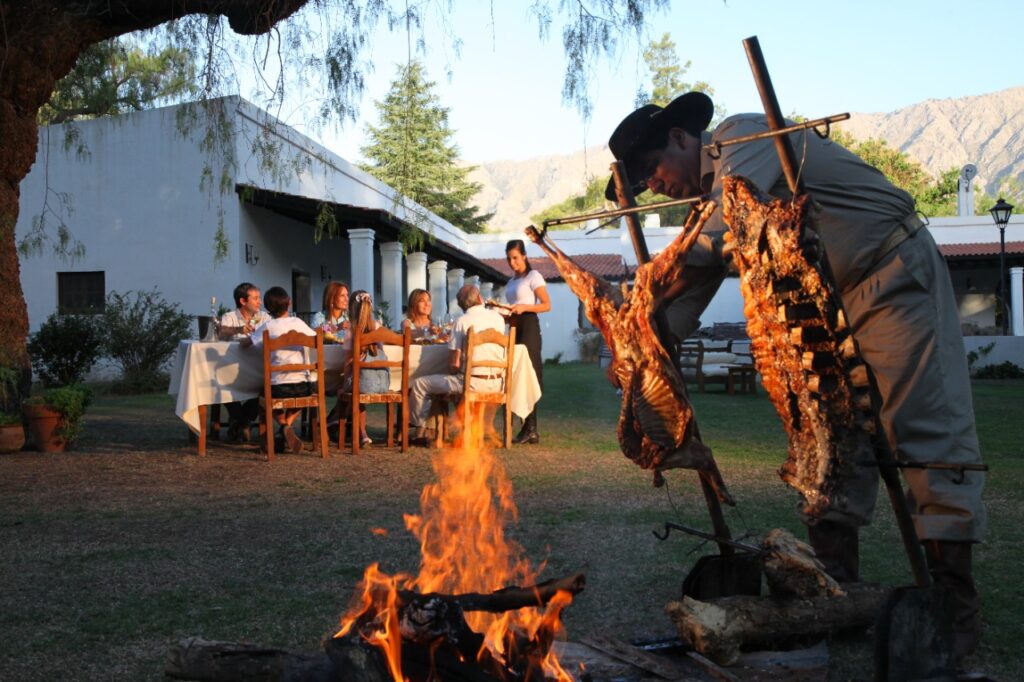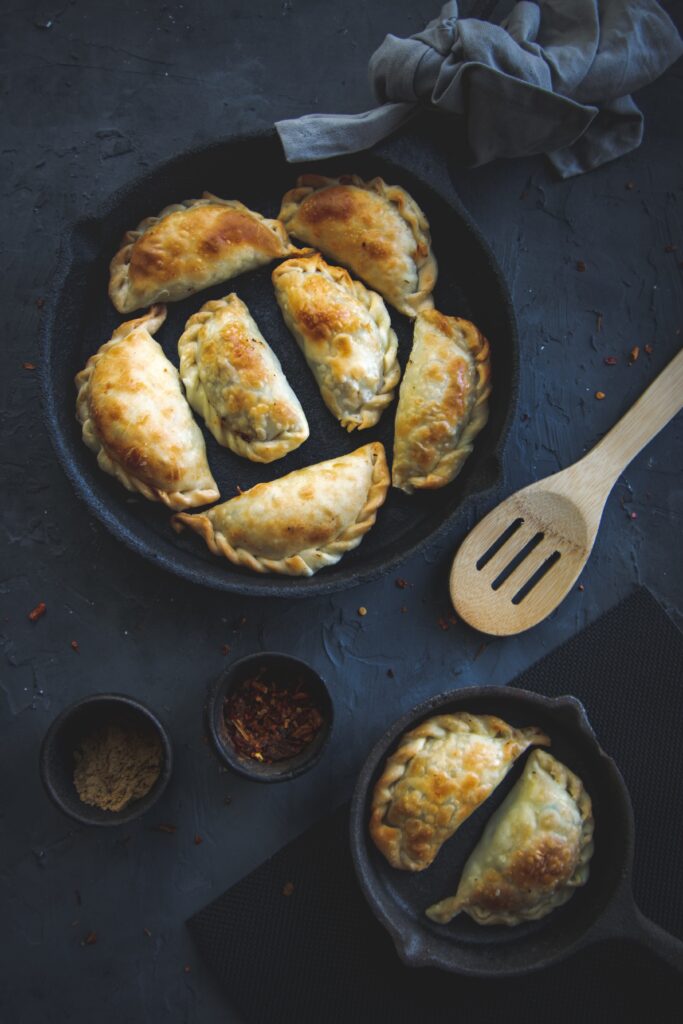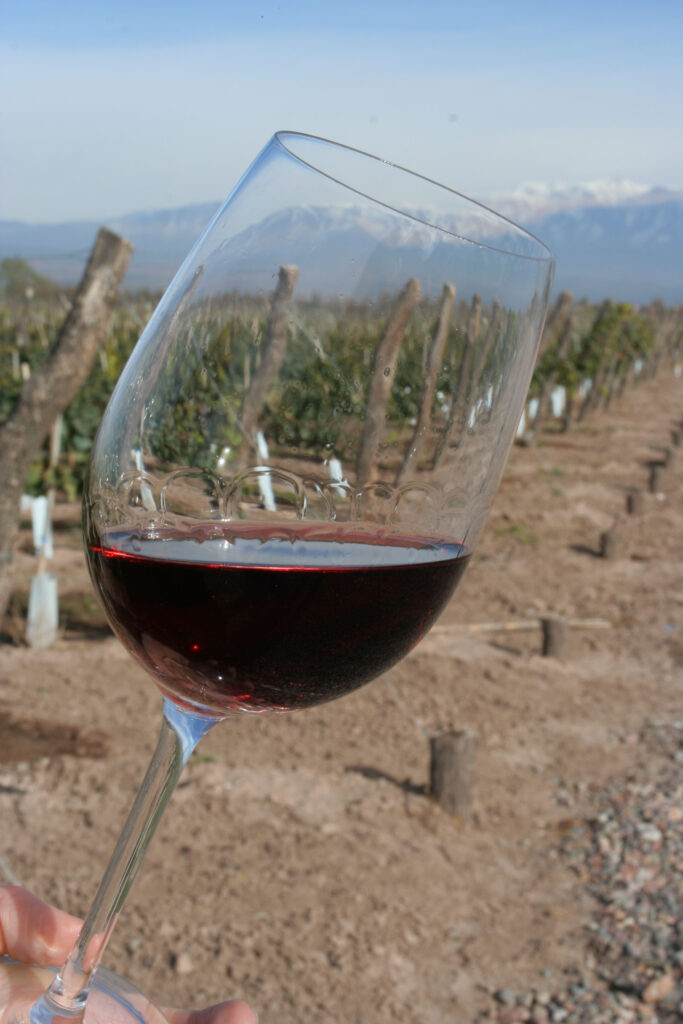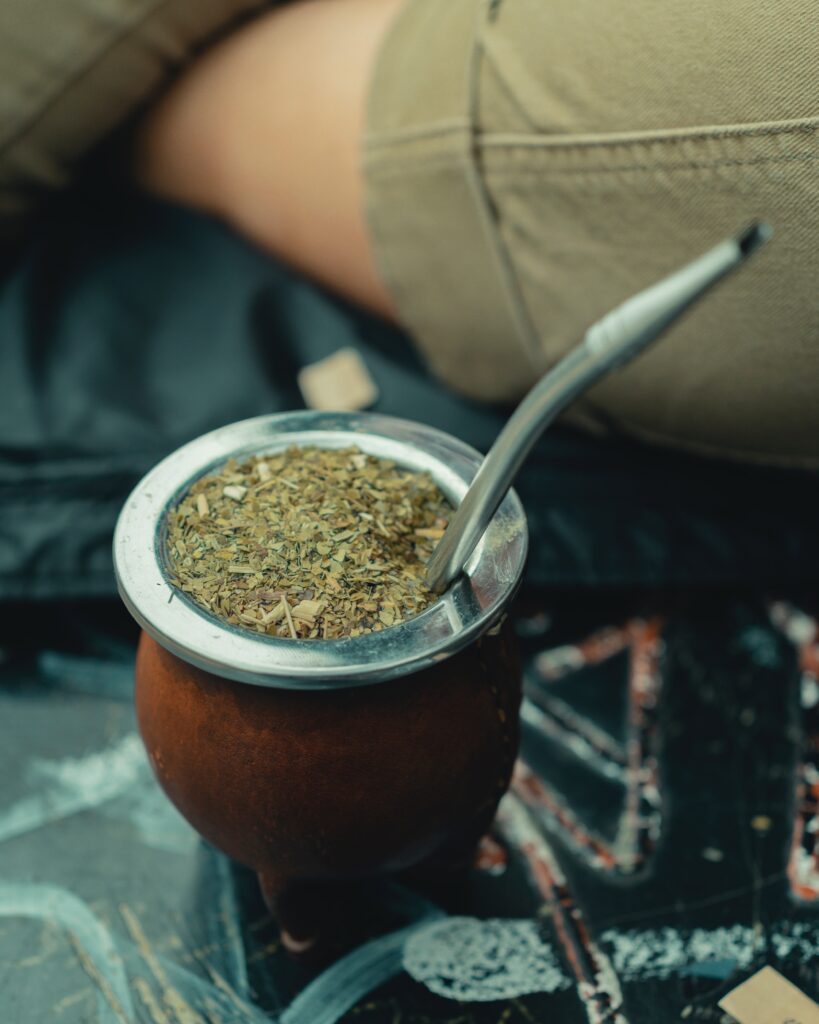
Located in the central-eastern region of the country, Buenos Aires, especially “Capital Federal”or well known as “Ciudad Porteña” stands out in its dishes for its wide traditions and customs related to the Creole, Italian and Spanish gastronomy that brought their culture to our country in different historical moments. The “asado”, the “milanesa” (breaded steak) made of veal meat, the fillet champignon, “gramajo” scrambled eggs, the potato tortilla, and pasta, are mostly the ones that represent the so-called “Cocina Porteña” and the flavor of its local ingredients. Some of its gastronomic poles are Palermo, Puerto Madero, Recoleta, and San Telmo, places that stand out for offering gastronomic experiences.
Short ribs or asado
This dish is one of the Argentinean cookeries by excellence, it has become an Argentinean trademark, we would even say that it is a ritual. Some of the typical cuts of meat of the asado are asado strip, flank, rump, rump tail, blank steak, and skirt steak. The most common are the offal which are composed of chitterlings, fat gut, cow’s udder, kidneys, heart, brains, sweetbreads, and very rarely cow testicles.
We cannot talk about short ribs or asado without mentioning one of the most outstanding sausages, the chorizo, also known as “Choripán”, which is already world-renowned. The Choripán is the ultimate Argentine street food, a sandwich consisting of chorizo sausage, with a variety of condiments inside a crusty bread. It is usually eaten on the go, as it is sold mainly in street stalls which are mostly found on the waterfront of the City of Buenos Aires.
Empanadas

Empanadas arrived in Argentina at the hand of the Spaniards and each region adapted them to its typical products and the taste of its population. Even today, each province has its variant, from the Salta, Tucuman, or Santiago de Chile, to the lesser-known ones from Patagonia. The regional empanadas of Northern Argentina still retain their aboriginal influences.
These dishes revolve around corn, potatoes, pumpkins, quinoa and llama, beef, pork, and chicken. Eating an empanada Salteña (originally from Salta) is a real pleasure, they stand out because they contain potatoes as a differential ingredient and meat cut with a knife, such as a buttock orroast beef. They can be fried or baked in a clay oven.
Now if we want to try empanadas Tucumanas (originally from Tucumán) they do not have potatoes, peas, or olives, they are very juicy and have chopped meat, green onion, white onion, ground chili, sweet paprika, and chopped egg. The meat used is matambre and can be cooked in a clay or gas oven.
Argentine wines

In Argentina, there are 10 wine-producing regions. The most famous for both quantity and quality is the Mendoza region, followed by San Juan. If we talk about exotic wines, we translate them as wines with a lot of color, scent, and flavor, so the high altitude wines from Quebrada de Humahuaca, a World Heritage Site, are among the highest wine regions in the world in Jujuy. They stand out in the thickness of the grape skins, the intense color, cleanliness, and healthiness of the grapes.
High altitude wines have more color and thus greater aromatic concentration, and natural acidity, are fresher and more fluid, express with more certainty the terroir they represent, and also have a greater presence of tannins in the case of red wines. Malbec, an Argentinean flagship from the South that is born in Mendoza makes its difference, these wines are warm, soft, and with very pleasant sweet tannins. With fruity aromas during its youth, then evolves with aromas of cinnamon and hints of vanilla; these are wines with great body, structure, and depth. Plum is one of the main protagonists of this wine.
Lamb
Between the embers and the flavors, lamb is a meat cut widely used for barbecues in Argentina. The traditional cooking of lamb is roasted on a stick that has previously been placed in brine (water, garlic cloves, and coarse salt). The roaster is very carefully selected as well as the cooking, which should be slow. As for how to eat it, it should be eaten with hot homemade country bread. This is is a favored dish in the south (more specifically in Santa Cruz and Chubut) as it is where the best lamb breeding takes place, thanks to the dry climate and the fact that it rains just the correct amount.
Mate, Pastries and Dulce de Leche
Mate

Are you coming for some Mate? A common expression used in Argentina denotes the warmth in the treatment and symbolizes union and sharing. This has facilitated the generation of relations in the region. It works as an excuse for a gathering with friends or family. The Mate is an infusion made with mate leaves, a plant native to the river basins of Argentina and Paraná. These previously dried, cut, and ground plants form mate, which has a bitter taste due to the tannins in its leaves. Subjectively, it can be drunk with or without sugar. It is worth mentioning that every moment is ideal to have a mate.
Locro
This dish is very suitable for consumption during winters or in cold areas. It is traditionally consumed on a massive scale on May 25, the day that commemorates the formation of the first Argentine patriotic government. It is made from white corn, beans and pumpkin. It requires a long cooking period, so the hard cuts of meat such as skirt steak can cook properly. Its origin comes during the time of conquest and a rich tradition that reflects the fusion of both cultures.
Dulce de leche

An essential sweet on a gastronomic menu, this dish is prepared with milk, sugar, baking soda and vanilla essence to intensify its flavor. You will find it in an infinite number of desserts, from pancakes, cakes and the longed-for choco cake. It is also found in candies, as a filling for bonbons, chocolates, sweet rolls, spanish churros, sweet Pastries called “facturas”, canons and bombs of dulce de leche, and even flan.
However, the most outstanding is “El Alfajor”. The Alfajor is one of the most sold sweets, and it is easily available at candy stores. The product is made up of two or more cookies or baked doughs, stuck together by dulce de leche dipped in dark chocolate or white chocolate, with peanuts or grated coconut. Our star is the “Cornstarch Alfajor”; this delight has been a tradition for more than 130 years in Argentina.
Pastries
Essentials on national celebrations, much like May 25th (May’s Revolution Celebration), the “Creole Pastries” cannot be absent during this celebration as they are a staple symbol. This dessert is a crunchy puff pastry dough, filled with sweet potato and dulce de leche, depending on personal preference, but the most traditional ones are made with quince sweet.


Be the first to reply